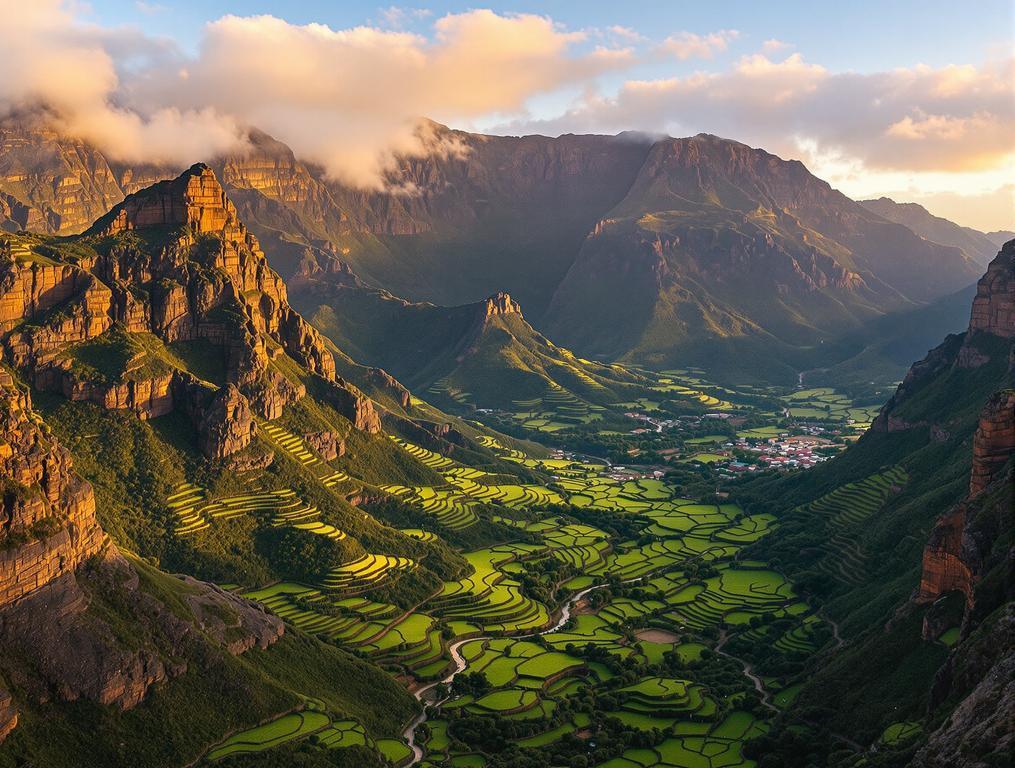The ferry rocks gently as we approach Santo Antão, the westernmost outpost of Africa. Through the morning mist, jagged peaks soar to 1,979 meters, their silhouettes like sleeping giants against the dawn sky. My guide Paulo laughs at my wide eyes. “Most people go to Sal for beaches,” he says, “but here, we have the mountains that breathe.”
I step onto Porto Novo’s harbor, where fishermen unload the day’s catch and a handful of trekkers adjust their backpacks. This isn’t the Cabo Verde most tourists see. While over 1.2 million visitors flooded the archipelago last year, only a fraction discovered this mountainous jewel with its 38,200 residents. And according to Paulo, that’s about to change dramatically.
Santo Antão’s 1,979-meter peaks: The dramatic trekking paradise 95% of travelers miss
A rugged 4×4 carries us from Porto Novo’s arid port toward the island’s spine. Within 30 minutes, the landscape transforms entirely. Dry scrubland gives way to vertiginous valleys where terraced fields cling impossibly to near-vertical slopes.
“This is why we call it Africa’s Madeira,” Paulo explains as we climb higher. “But while Madeira sees millions of tourists annually, Santo Antão remains authentic.” The comparison is apt – both islands feature dramatic peaks and lush valleys, but here the trails remain blissfully uncrowded.
At 1,200 meters elevation, we reach Cova, a volcanic crater transformed into a patchwork of gardens. Farmers tend to coffee plants and sugarcane, their methods unchanged for centuries. Like France’s hidden medieval village of Pesmes, Santo Antão offers authentic experiences that mainstream tourism has overlooked.
The island’s geography creates distinct microclimates. The northeast receives abundant rainfall, producing lush ribeiras (valleys) filled with banana plantations and mango trees. Meanwhile, the southwest remains arid, with dramatic coastal cliffs plunging into the Atlantic.
Why Cabo Verde’s “Africa’s Madeira” will transform in 2025
As we traverse a ridge offering panoramic views of both coasts, Paulo shares news that makes my heart race: “EasyJet plans to expand flights to Cabo Verde in 2025, making Santo Antão more accessible than ever.” Currently, reaching the island requires flying to neighboring São Vicente, then taking a one-hour ferry.
This relative isolation has preserved Santo Antão’s character. The rugged mountain roads rival scenic routes like Montana’s Beartooth Highway, offering dramatic vistas at every turn.
“I’ve hiked in the Alps, the Andes, and across Asia, but Santo Antão feels different. There’s this perfect balance – challenging enough to feel earned, accessible enough to enjoy, and authentic in a way that’s vanishing from the world.”
The island has potential to follow sustainable models like Thailand’s Koh Yao Yai, which maintains cultural integrity despite tourism growth. But the window for experiencing Santo Antão in its pristine state is narrowing.
In Ponta do Sol, a colorful coastal village, I meet Maria, who has converted her family home into a guesthouse. “The perfect time to visit is now through August,” she insists. “The valleys are green from recent rains, the temperatures mild, and the trails at their most beautiful.”
What the guidebooks won’t tell you
For the most rewarding experience, start trekking before 9am to avoid midday heat. The coastal path from Ponta do Sol to Cruzinha offers dramatic ocean views with moderate difficulty. For serious hikers, the trail from Cova to Paul valley delivers 1,000m of descent through changing ecosystems.
Local transportation between villages costs approximately 300 escudos ($3) per ride in shared “aluguer” vans. Book your ferry from São Vicente at least one day ahead during high season. And learn the phrase “Obrigado bsot” (thank you very much) – it invariably produces smiles.
June is ideal for witnessing the island’s post-rain transformation when valleys burst with verdant vegetation and seasonal waterfalls cascade down volcanic slopes. Some guesthouses in Paul valley offer rooms for as little as $30 per night.
As my ferry departs back to São Vicente, I watch Santo Antão’s peaks recede into the distance. Sarah would love photographing these terraced fields at sunset, and Emma would delight in the friendly goats that seem to appear magically on impossible cliffs. In a world increasingly defined by overtourism, this mountain haven feels like a secret whispered by the Atlantic – one that won’t remain quiet for long after 2025.
